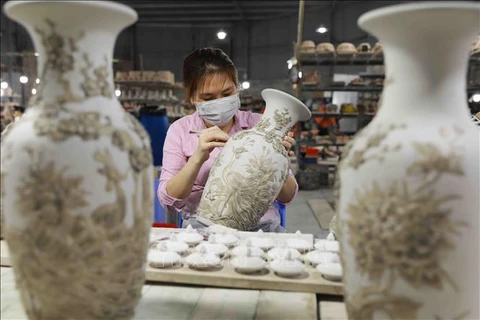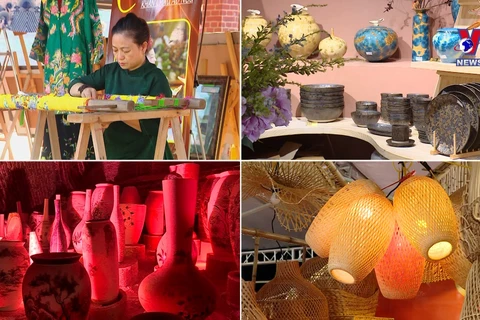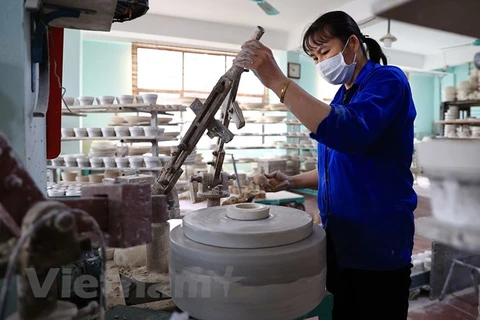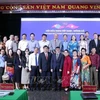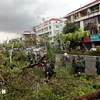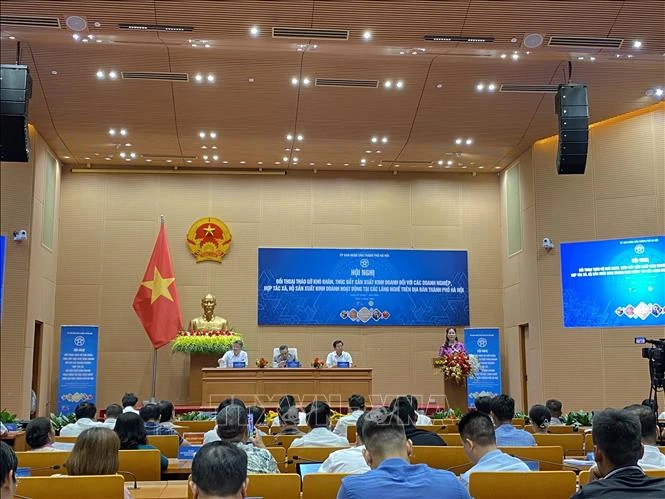
Hanoi (VNA) - The Hanoi People's Committee has organised a dialogue to address difficulties and promote the operation of enterprises, cooperatives, and household businesses in the capital city's craft villages.
In his opening remarks at the July 5 event, Vice Chairman of the municipal People's Committee Nguyen Manh Quyen emphasised that Hanoi considers craft villages a highlight in the decade of cultural industry. Craft villages are a key focus in the socio-economic development of many local areas and an indispensable destination for both domestic and international tourists visiting the capital. Products from these villages manifests the cultural, historical, and human essence of Hanoi to consumers at home and abroad.
Currently, the city boasts 47 out of the 52 traditional crafts recognised nationwide, with the production value of its craft villages surpassing 24 trillion VND (960 million USD).
In recent years, these villages have become a magnet to both domestic and international tourists with their rich cultural heritage and the creativity of skilled local artisans reflected in their product. These unique products include Phu Vinh bamboo and rattan weaving, Chuong conical hats, Ha Thai lacquerware, Tay Tuu flowers, Quat Dong embroidery, Van Phuc silk, Bat Trang ceramics, Xuan La toy figurines, Me Tri young green rice, Chang Son fans, Dao Thuc water puppets, Thach Xa bamboo dragonflies, Ngu Xa bronze casting, and Dinh Cong silver carving.
The craft villages play a crucial role in shifting the economic structure and developing the rural economy. They are actively contributing to the success of the city’s "One Commune, One Product" (OCOP) and the new-style rural development programmes.
The conference received 70 opinions from 59 enterprises, cooperatives, and producers regarding planning, infrastructure, tourism, environment, and support policy issues involving craft villages, as well as related science and technology, trade promotion, branding, and regional raw material linkages.
Participants generally held that these villages still operate on a small, fragmented, and spontaneous scale, with their production equipment remaining manual and outdated and management capabilities limited. As a result, the competitiveness of many products is low, and the villages’ growth has yet to match their potential and advantages.
Moreover, several policies are inconsistent with practical needs, while accessing preferential capital and commercial bank loans poses significant challenges. Therefore, environmental pollution in craft villages has seen little improvement, and the packaging, labeling, and design of their products remain simple and unattractive.
Le Van Nguyen, an embroidery artisan, shared his views on the role of information technology in developing business for handicraft products. He said that applying new technology throughout the production and consumption chain is crucial for profitability in craft villages, reducing costs and enhancing competitiveness. From production processes to operations, management, online and direct sales and trade fairs, technology plays a pivotal role.
In conclusion, Chairman of the municipal People's Committee Tran Sy Thanh highlighted that the annual revenue from Hanoi's craft villages reaches approximately 1 billion USD, accounting for 2% of the city's total production value. These villages are particularly crucial in providing employment for hundreds of thousands of rural labourers, as well as in preserving and promoting Vietnam's unique cultural values.
He noted that Hanoi is currently focusing on implementing the revised Capital Law, which presents an opportunity to introduce specialised mechanisms and policies to sustainably foster the preservation and development of local craft villages./.
